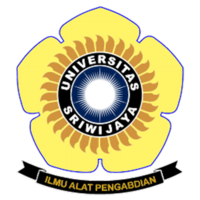Performa Kelistrikan DSSC dari Dye Daun Bungur (Lagerstroemis speciosa) dengan Variasi Konsentrasi Dye
Abstract
Ariyani GP, Hower H, Tamrin T, Pratama F. 2022. DSSC’s electrical performance from dye of bungur leaf (lagerstroemis speciosa) with varied dye concentration. In: Herlinda S et al. (Eds.), Prosiding Seminar Nasional Lahan Suboptimal ke-10 Tahun 2022, Palembang 27 Oktober 2022. pp. 105-112. Palembang: Penerbit & Percetakan Universitas Sriwijaya (UNSRI).
Dye Sensitized Solar Cell (DSSC) can convert solar energy into electrical energy using organic matter (dye) as a sensitizer, but it necessary to innovate on dye so that resulting efficiency is optimal. The purpose of this research was to determine the electrical performance of Dye Sensitized Solar Cell (DSSC) with varied dye concentrations of Bungur Leaf Extract (Lagerstroemis speciosa). The research methods included the preparation of the DSSC structure, the preparation and assembly of the DSSC, and DSSC analysis. The chlorophyll content in the leaves of Bungur was calculated based on the absorbance characteristics at wavelengths of 649 nm and 665 nm. The results of the measurement of chlorophyll levels in Bungur leaves were directly proportional to the addition of concentration. The higher the solvent concentration, the more chlorophyll would bind dye. At concentrations of 2% to 8%, the efficiency increased with the values respectively 0.0018%, 0.0047%, 0.0054%, and 0.0114%. Afterwards, at the highest concentration of 10%, the efficiency decreased by 0.0050%. The chlorophyll content in the leaf dye affected the performance of DSSC at a certain concentration limit which was due to the accumulation of dye molecules in the TiO2 pores.
Dye Sensitized Solar Cell (DSSC) can convert solar energy into electrical energy using organic matter (dye) as a sensitizer, but it necessary to innovate on dye so that resulting efficiency is optimal. The purpose of this research was to determine the electrical performance of Dye Sensitized Solar Cell (DSSC) with varied dye concentrations of Bungur Leaf Extract (Lagerstroemis speciosa). The research methods included the preparation of the DSSC structure, the preparation and assembly of the DSSC, and DSSC analysis. The chlorophyll content in the leaves of Bungur was calculated based on the absorbance characteristics at wavelengths of 649 nm and 665 nm. The results of the measurement of chlorophyll levels in Bungur leaves were directly proportional to the addition of concentration. The higher the solvent concentration, the more chlorophyll would bind dye. At concentrations of 2% to 8%, the efficiency increased with the values respectively 0.0018%, 0.0047%, 0.0054%, and 0.0114%. Afterwards, at the highest concentration of 10%, the efficiency decreased by 0.0050%. The chlorophyll content in the leaf dye affected the performance of DSSC at a certain concentration limit which was due to the accumulation of dye molecules in the TiO2 pores.
Keywords
DSSC, chlorophyll content, dye concentration, efficiency
Full Text:
PDFArticle Metrics
Abstract view : 212 timesPDF - 327 times
Refbacks
- There are currently no refbacks.

